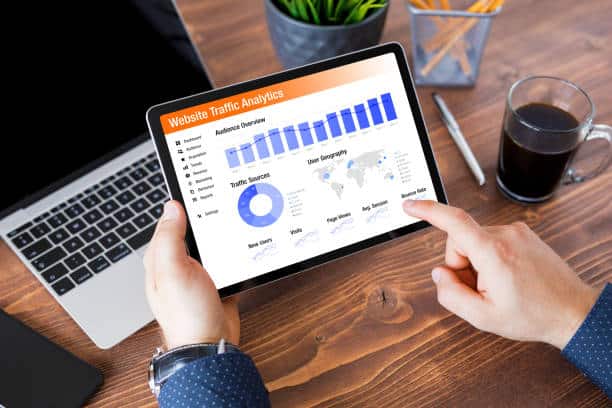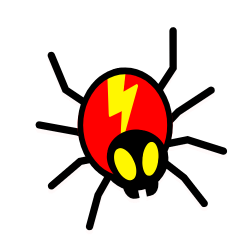Bot traffic can be a major issue for website owners, leading to a decrease in performance and real customer engagement. Identifying and avoiding bot traffic on your website is essential for maintaining your site’s performance and improving customer satisfaction.
This article will discuss how to identify and avoid bot traffic on your website and some tips for improving your website performance. We’ll look at the different types of bot traffic, how to spot them, and the best practices for avoiding them.

By being aware of the potential issues and implementing the right measures, you’ll be able to identify and avoid bot traffic on your website and improve your website performance.
What do bots do?
A piece of programming that executes one or more tasks is known as an internet bot. Bots, frequently located on a computer server or data center, are sometimes charged with carrying out a repetitive task or fast gathering enormous volumes of data.
How do bots affect website performance?
It’s crucial to recognize that most scripts and programs used by bots are made to carry out the same activity again. Undoubtedly, the bot’s author wants the job finished as soon as possible, but doing so could negatively affect your website.
The negative effect of bots on-site servers
Bot traffic can put a heavy burden on your site’s servers, causing response times on the server side to be delayed. This causes delays for your end users, particularly in areas with a spike in bot traffic.
In the first half of 2021, bots accounted for roughly two-thirds of all internet traffic worldwide, according to research from data security service provider Barracuda Networks. On the other hand, malicious bots constituted about 40% of all traffic.
Digital ad fraud, expected to increase from $35 billion in 2018 to $100 billion in 2023, is largely driven by bot traffic.
How to recognize bot presence on the website
Bots that visit websites with ads on them and click on different page elements might cause bogus ad clicks. This is called click fraud, and while it may raise ad revenue at first, once internet advertising networks identify the fraud, the site, and the owner will typically be removed from their network.
Fortunately, this rarely occurs in the most extreme circumstances; most of the time, bot traffic on your website has only small negative impacts. You might anticipate the following when your website experiences a lot of unwanted bot traffic, like high bandwidth usage, more page views; conversion declines, junk emails, inaccurate Google Analytics data, and prolonged load times.
What is meant by bot traffic?
Bot traffic is traffic to a website from non-humans. Online services frequently employ bots to gather information from the internet and improve customer experience. If it weren’t for bots, Google’s search results might resemble Alta-Vista or AOL more.
Hence, any machine-generated traffic accessing a website is called bot traffic. The website will eventually receive visits from several bots, whether a well-known news site or a small, recently launched company.
The application launches, conduct a web search and output the desired outcome, typically in a split second. Anyone can make an internet traffic bot; their simplicity poses several issues. With little research, even very unskilled web programmers may create a short bot.
Various Bot Traffic Types
There are both good and harmful sorts of website bot traffic. One thing to keep in mind is that there are many different types of internet traffic bots.
Hence, on the one side, we have intricate scripts created by businesses to gather various data. On the other side, we also have straightforward programs that do one or two things. Additionally, unwanted and harmful programs like spam bots and form fillers exist.
Good bots
Bot traffic is frequently interpreted as intrinsically bad. However, this isn’t always the case. Some bots are valid and necessary for the operation of certain web services, such as search engines and personal assistants. Here are some of the good bots:
Search engine optimization (SEO)
Search providers like Google employ the information gathered by search engine crawler bots as they index, categorize, and crawl web pages.
Website Monitoring
These bots keep an eye out for problems with loading times, downtime, and other aspects of website health.
Website Aggregation
These bots collect data from many websites or sections of a website and compile it in one location.
Scraping
There are “good” and “evil” bots in this category. These bots “scrape” or “lift” data from websites, such as email addresses and phone numbers. For instance, scraping can be utilized for research, but it can also be used for illicit information copying or spamming.
Bad bots
Aside from the good bots mentioned above, some bot traffic is intended to be harmful and can have a detrimental impact on Google Analytics statistics. These web crawlers can be utilized for data scraping, distributed denial of service (DDoS) attacks, and credential stuffing.
Spam
Spam bots propagate content, frequently in the “comments” section of websites or by sending you fraudulent emails purporting to be from Nigerian princes.
DDoS
Complex bots can be used in a denial-of-service assault, which is frequently a coordinated effort, to bring down your website.
Ad Fraud
To increase ad click rewards, fraudulent websites frequently use bots to click on your advertising automatically.
Ransomware and other nefarious assaults
Bots can be used to do any destruction, including ransomware attacks, which encrypt machines frequently in return for payment to “unlock” them.
Bot types to be on the lookout for
Some bots are necessary for search engines and digital assistants to function and perform at their best. However, certain search engine bots are expressly made not to harm websites or the user experience.
Bot traffic of the following categories should be avoided:
Download bots
Download bots interfere with actual user interaction statistics like click bots. Instead of affecting the number of ad clicks, they instead generate a false download count. Download bots fabricate a download, producing bogus performance information.
Click Robots
Click bots perform fake ad clicks and are used in click spamming. This bot is regarded as the most harmful form by most web publishers, especially those who use pay-per-click (PPC) advertisements. This is because click bots distort data analytics by simulating site traffic, eroding advertising spend without providing value.
Form-filling bots
Form-filling bots are also known as spam bots. A spam bot’s main function is frequently to gather contact information, such as phone numbers and email ads. These later create phony user accounts or manage accounts on social media that have been compromised. Additionally, they impede user interaction by disseminating inappropriate content, such as spam comments, website redirection, phishing emails, and competitive negative SEO.
Spy bots
Spy bots get their moniker because that is exactly how they behave—like spies. They steal data and information from websites, social media platforms, chat rooms, and forums, including email addresses.
Scraper bots
Scraper bots pose a serious risk to a company and its website. They were produced by third-party scrapers, which were then used by business rivals to steal and publish valuable content, including listings of products and pricing. Hence, scraper bots are web crawlers that only visit websites to steal content from authors.
Imposter bots
Imposter bots are fraudulent bots that imitate human behavior by pretending to be actual website users. They frequently engage in DDoS activity and intend to get through online security measures.
How can I spot bot traffic?
When learning how to spot bot traffic, Google Analytics is the ideal place to start. The first step in ensuringe you’re receiving all the advantages of good bots (like showing up in Google’s search results) and avoiding bad bots from harming your business is to detect bot traffic.
High bounce rate
A high bounce rate is an excellent sign that there is bot traffic there. The percentage of visitors to your website that leaves after seeing just one page is known as the “bounce rate.” Most likely, human visitors will find your website (through, say, a search engine result) and click through to learn more about what you have to offer. A bot won’t explore your website; instead, it will “hit” one page before leaving.
SEO effectiveness
Web scraping bots may grab your content and post it on other websites, which may have a long-term effect on your site’s SERP rating. There is also a potential that the website dubiously posting your content may outrank your website, but Google may also penalize your website for duplicate content concerns. For your article to always be regarded as canonical even if your material is stolen, make it a point to set up canonical tags on every blog post.
Pages views
It’s unlikely to be human traffic if you suddenly notice 50 or 60 pages being browsed every session. The typical visitor may browse a few pages on your website before leaving.
Average session length
Bot clicks often occur after two seconds. Hence, the average session length can reveal much about how visitors from various sources use the site. The Microsoft Corp Network is most likely bringing non-human traffic.
Slow load metrics for your site
It may be a sign of an increase in bot traffic or a DDoS (Distributed Denial of Service) assault if load times suddenly slow down and your site feels sluggish.
Conclusion
It is crucial to identify and block harmful bot traffic effectively. While there are several strategies, we may employ to reduce undesirable bot traffic, purchasing a dedicated bot management solution continues to be the best option.

Jay
I've worked for WooRank, SEOptimer, and working on a cool SEO audit tool called SiteGuru.co. Now I have build Linkilo and SEO RANK SERP WordPress theme. I've been in the SEO industry for more than 5 years, learning from the ground up. I've worked on many startups, but also have my own affiliate sites.
TRY OUR FULLY SEO-OPTIMIZED WORDPRESS THEME FOR AFFILIATE MARKETERS!
No need to hire SEO experts anymore to fix your site technical SEO issues
IMPROVE YOUR SITES RANKING TODAY